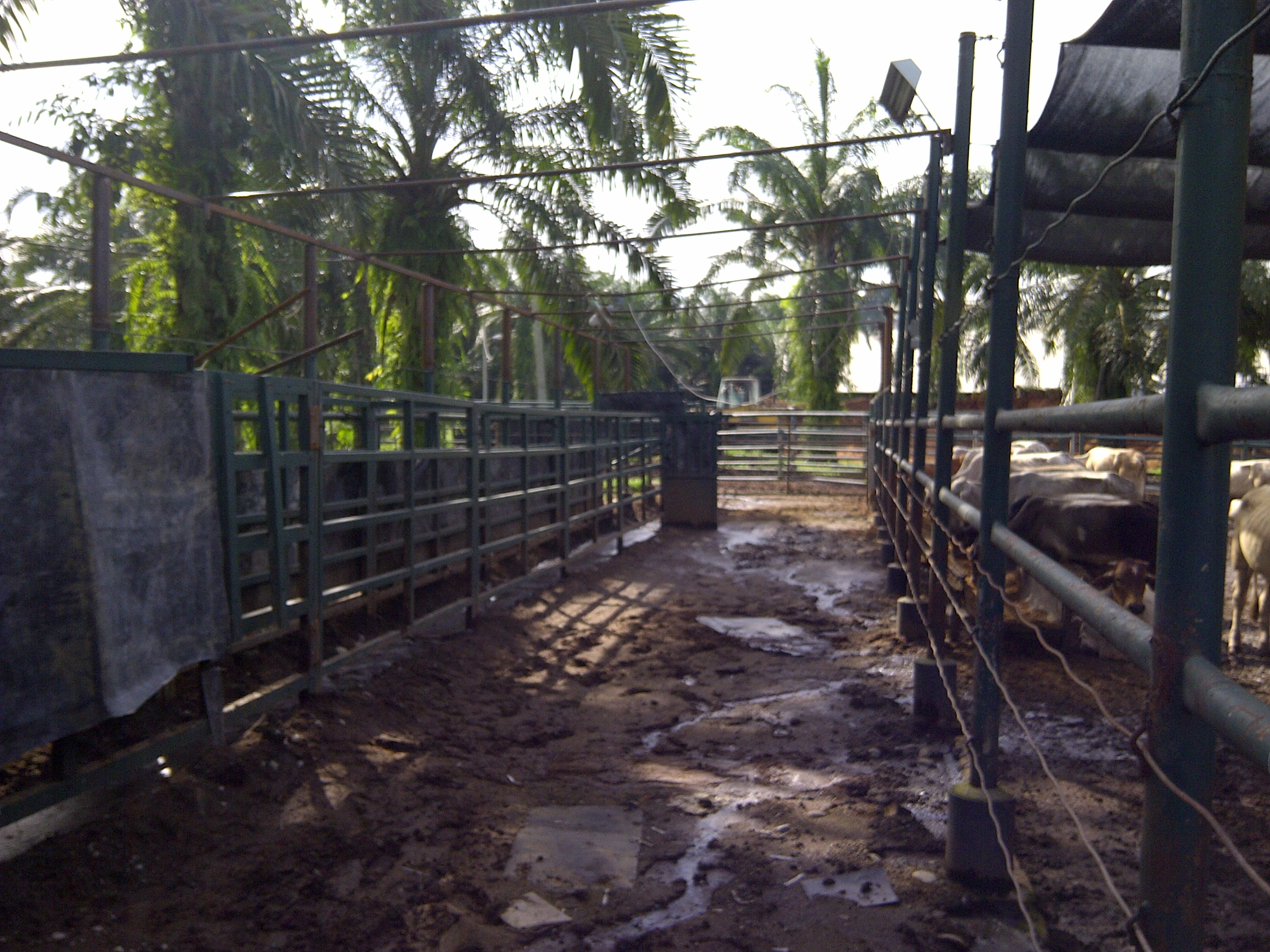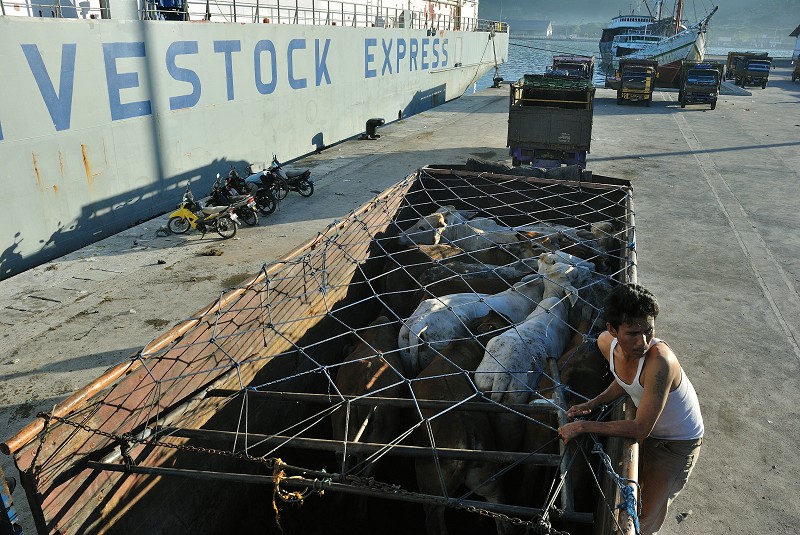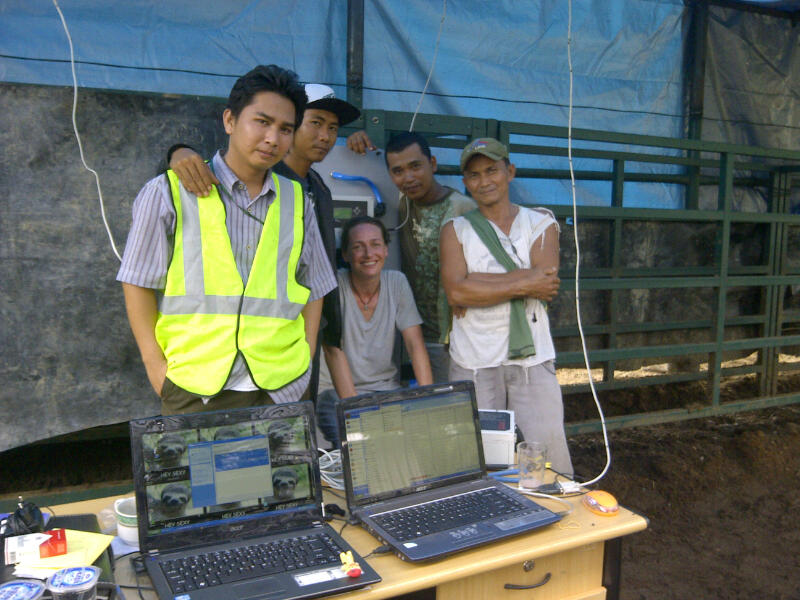The Indonesian discharge process
Host: Lisa Wood/ AGP Indonesia
Written by Lisa Wood – Traceability Officer, AGP.
I would love to have wonderfully creative names for my pieces like Jo did, unfortunately ‘Cattle, Ships and Travel to Foreign Lands’ just doesn’t have the same ring as PMT (Pre Mustering Tension)
This is the continuation of the story of the hard work that people like Jane and Jo (and the hundreds of others) have done on the land in Aus to get the cattle to this point. Steph has written a fair bit about what happens on the ships in her ‘Live Export Diaries’ and today we are walking cattle off the ship.
I kind of like the ships. I like walking along the decks and admiring the design and construction that has gone into the systems that delivers fresh water and feed to every pen on board. The months of construction and the thousands of welds that’s gone into building the ship. I marvel at the reverse osmosis system to convert salt to drinkable water, and the air systems to provide fresh air for the lower decks. I like the thought that has gone into the walkways – designed for cow feet, not human feet. It astounds me how clean the beams are. The night I had explained to me the cleaning process that has to be performed before the ship is allowed to berth back in Australia, I had to reach up to touch the top of a beam to check – and yes, NO DUST. AQIS takes bio-security seriously when it comes to bringing things into Aus.
So, we get a call that the ship is berthing at ‘X’ o’clock and Thama starts running back and forwards delivering copies of the documents to those who need them. When the ship has berthed customs and quarantine officers come and inspect the ship and the cattle. This process can take about four hours.
In the meantime, the call has gone out to the trucking company and trucks start arriving at the wharf waiting to be given the go ahead for discharge to start. Michael is another member of the team that helps coordinate the trucks. Michael’s other job is marketing our beef products. If we can, we use about 70 trucks for a discharge, which is why it is so important the trucks know the arrival date so they can make themselves available.
OK, we’ve got the ship berthed at port, the trucks are ready and waiting, customs and quarantine has been and done their inspections – then it is full systems go! Gates open and cattle start moving off the ship and onto the trucks. This is the reason why hours of training have also been given to stevedores and truck drivers. The cattle’s feet will not touch soil until they get to the feedlot.
Of the 29 shipments (that’s about 74,000 head) that I have seen arrive for us since ESCAS began, I think there has been five deaths of cattle in transit. Mind you, the exporters are not required to tell us and I haven’t studied the DAFF reports, it’s just something that gets known about because no-one is very happy about it. Unfortunately sometimes cattle die, we have it happen in the feedlot here, and I know producers in Aus have it happen as well. Most of the time in the feedlot it is bloat, occasionally pneumonia, although we did have a storm one night and one cow died when a coconut tree fell over and hit him on the head. At least here we do not have wild dogs to worry about. And YES, each and every one of these deaths is reported to our exporter, who then reports to DAFF.
The cattle are counted onto the trucks (number of head recorded). The trucks shuttle back and forth between the ship and the feedlot, with stops at two weighbridges in between, until all the cattle allocated for us have been unloaded. At the weighbridge, the registration number of the truck, how many head of cattle are on that truck and the weight of the truck loaded and unloaded is recorded on the delivery slip. This slip is in triplicate, one copy stays at the port weighbridge; two go with the driver. When the truck arrives at the feedlot, he needs to hand one copy over to the staff at our weighbridge, who check that all the details are the same as when the truck left the port.
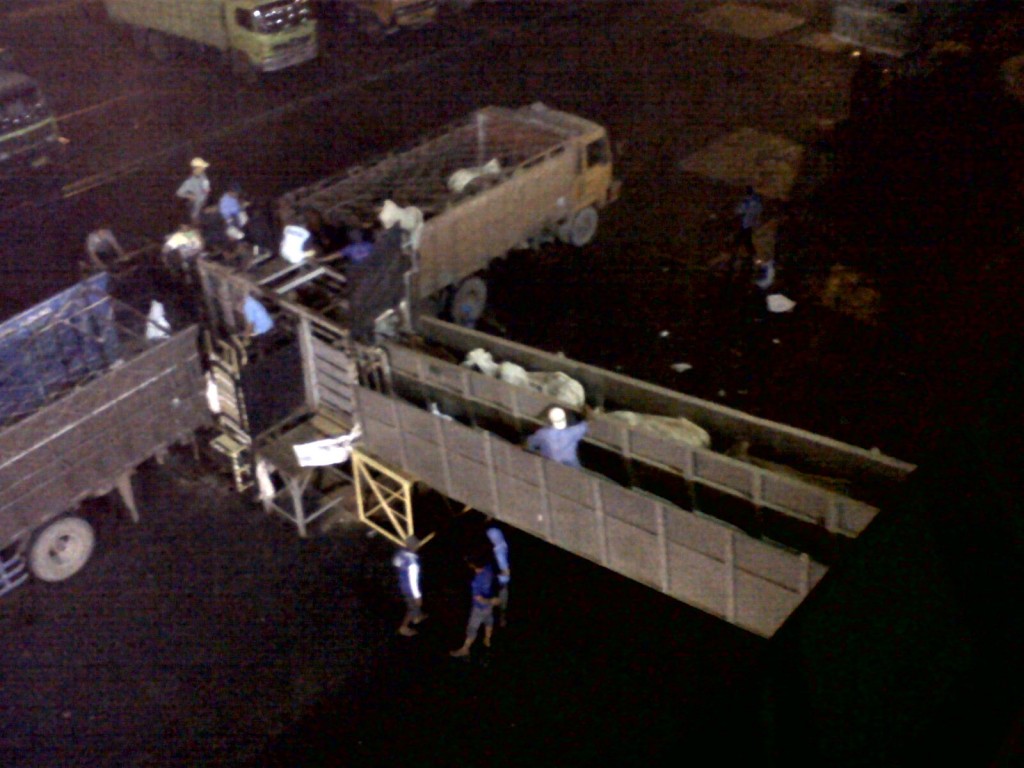
A ship may be carrying cattle for four or five (maybe more) different importers at a time. This is classed as commercial information of the exporter and none of our business, so I can’t give exact details (as is any deaths of cattle on the ship). Either way, the exporter must report fully to DAFF as part of their responsibilities under ESCAS.
When a truck arrives at the feedlot, the cattle are unloaded and head offloaded are checked against the number loaded. Then they go through the race past the panel scanner. At our place, we stop them in the race as we also do a back-up RFID (radio frequency identification) scan with the hand scanners. The amount of head that came off the truck are compared to the amount of scanned RFID’s for that truck to make sure all tallies and the cattle are moved into a pen to await the rest of their mates while the humans wait for the next truck load.
Each truck holds approximately 15 head. The trucks shuttle back and forth between the port and the feedlot until our allotment of cattle are all off the ship and at the feedlot. This can take a few hours – approx three hours return trip per truck soon turns into about 30 hours total time for discharge. This takes a toll on everyone involved as this is a straight stretch of work. Naps are taken between truckloads if possible.
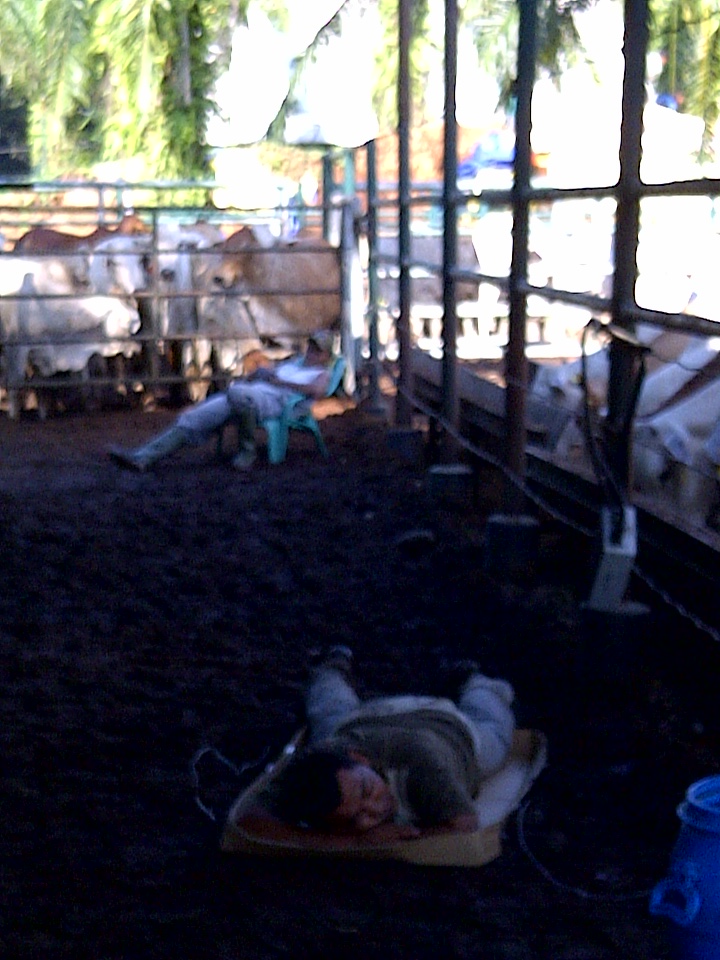
When all our allotted cattle have been moved off the boat and into the feedlot, the final head count is compared with those at the port and the amount of RFID scans to make sure the quantities match. The RFID scans are then compiled and sent to the exporter.
After all this is done, everybody is ready for a rest then the next phase of customs and quarantine inspections. Within four days of arrival the cattle will receive another vaccination; weighing and will also receive their visual tags. This is when Dr. Neny; Pak Nyoman and the rest of the feedlot team come into the picture.
Medan Intake Team – my first ever intake. One guy at the first gate to open and close the race; one guy at the other gate to catch and release from the race; one guy takes scans; one guy at the computer for data entry and a couple of others to help the cattle move from the truck into the race.
